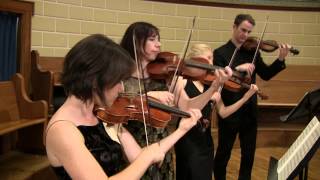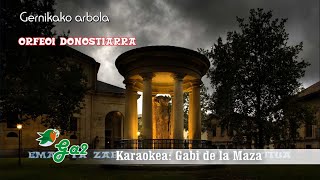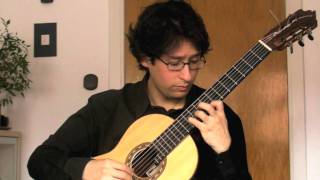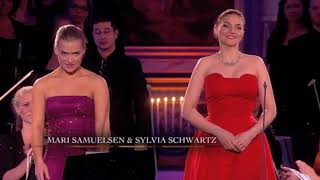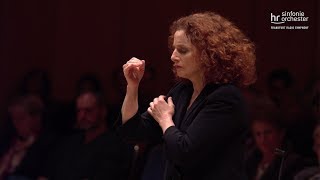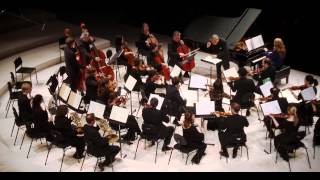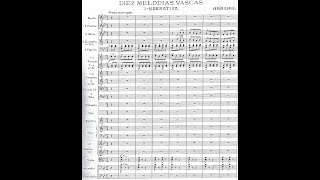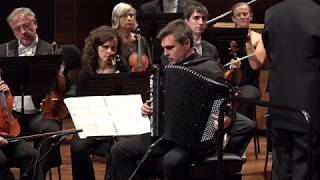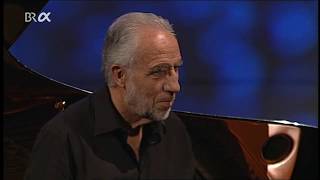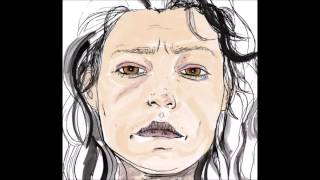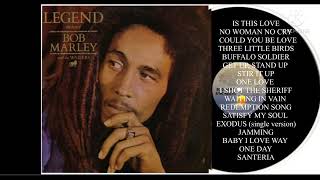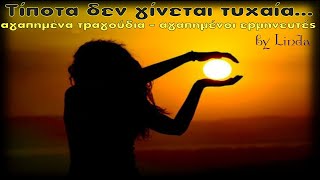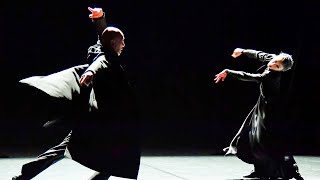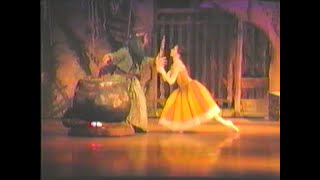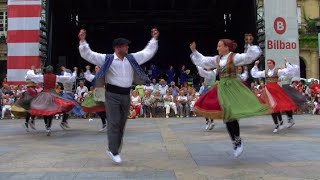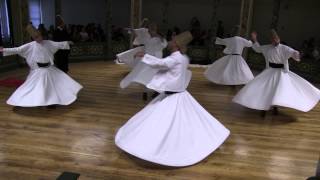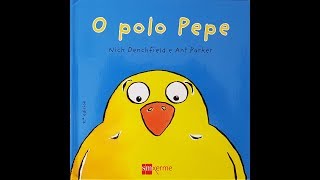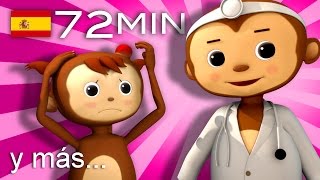On March 31, 1685, Johann Sebastian Bach was born.
This year on March 31, Aberri Eguna (Basque Nation Day) is celebrated.
Recommended music videos for initiation to classical music
Johann Sebastian Bach (1685-1750) Today we meet one of the three giants of Western music along with Mozart and Beethoven . He was a German violinist, organist, conductor, and composer; He was born in Eisenach and died in Leipzig and his fame as an organist crossed European borders. He belonged to the most prominent musical family in history with more than 30 famous composers within it. He began studying with his father and after his death he continued with his older brother, Johann Christoph . In 1703 he obtained his first job as a court musician for the Prince of Arndstat and later as an organist; In 1705 he obtained permission to move to Lübeck for a few months to take classes from Buxtehude .
In 1707 he moved to Mülhausen as an organist, where he married his cousin María Bárbara with whom he had seven children (three of them would die at a very young age). In 1708 he left Mülhausen to work as concertmaster and organist at the Duke of Weimar 's chapel where he composed numerous keyboard and orchestral works while also having the opportunity to transcribe and study various works by Vivaldi . In 1714 he was rewarded with economic improvements, but forced to meet new requirements such as the creation of a monthly cantata. In 1717 he was offered the position of Chapel Master of the Prince of Köthen , which was the best paid musical position at that time; From here come the Brandenburg Concertos and numerous secular works.
After the death of his wife in 1720, he remarried after a year and a half to María Magdalena with whom he would have another thirteen children. In 1723 he moved to Leipzig where he would reside until his death. Here he composed his Christmas Oratorio, The Passion of Saint Matthew, The Passion of Saint John, the Mass in B minor , numerous cantatas and the most important keyboard works. He died at the age of 65 in Leipzig after a year of blindness. A prolific composer, he wrote sonatas, arias, suites, concertos, cantatas, oratorios, masses and works of all types of musical forms of his time; His legacy of refined technique is considered the summit of counterpoint (different melodic lines that move independently, although harmonically related to each other) and his influence has been notable on Haydn , Mozart , Beethoven , Mendelssohn , Schumann , Chopin ... and many others. renowned composers.
The Brandenburg Concerto No. 5 is a Concerto Grosso (a small group of soloists performs in front of a larger accompaniment group). In the present case, the group of soloists is represented by the violin, the flute and the harpsichord, which plays the double role of soloist at times and accompanist at other times. The concerto consists of three movements: I ALLEGRO .-. II AFFETTUOSO .-. III ALLEGRO, of which today we offer the third version of Apollo's Fire, The Cleveland Baroque Orchestra , a musical ensemble specialized in early music, which performs with period instruments.
The Aberri Eguna ("Homeland Day" in Basque, in reference to the Basque homeland) is a festive celebration of Basque nationalism of the right and the left that is held annually on Easter Sunday . This celebration, created by the Basque Nationalist Party in 1932, is celebrated throughout the Basque Country (autonomous communities of Euskadi , Navarra and the Basque Country in France ), as well as by the Basque diaspora throughout the world. The first celebration was held in Bilbao in 1932; It was banned by the Spanish fascist dictatorship of 1936 and began to be celebrated again in 1964.
Gernikako arbola , Iparragirre 's best-known song, is a zortziko in homage to the Gernika Tree and the Basque charters it represents. The song was premiered in 1853 by José Mª Iparragirre at the Café de San Luis in Madrid , accompanied on the piano by the Durangarra maestro Juan María Blas de Altuna , organist of Lekeitio . The zortziko was repeated again and again among the most spontaneous bravos and applause and at the last minute the Gernikako arbola was sung in chorus by fifty, sixty or more voices, while Iparraguirre and Altuna were the object of a true ovation. Regarding the authorship of the song, there are serious doubts about whether it was Iparragirre or whether it was Altuna , although without further reliable evidence, we continue with the traditional attribution.
José María Iparragirre (Urretxu, Gipuzkoa, 1820-1881) was a well-known bertsolari (verse improviser) and popular musician, who had a bohemian and adventurous life; hence his nickname of the Basque bard , an image that he supported with an inseparable guitar and the improvisation of songs and bertsos. His work, written mostly in Basque , includes some of the most significant and popular songs of the Basque Country . Considered by the Spanish authorities of his time as a dangerous “mass agitator,” he suffered imprisonment and exile, lived for 19 years in Argentina and Uruguay , and upon his return he made a living with the recitals he gave throughout the Basque Country . He died of pneumonia in his hometown of Urretxu , where he is buried.
The Gernika tree is a specimen of oak ( Quercus robur ) located in front of the Assembly House in the Biscayan town of Gernika . This tree symbolizes the traditional freedoms of Bizkaia and by extension those of the entire Basque People . Today's song is offered to us by the San Sebastian Orfeón conducted by maestro Juan Gorostidi .
Antonio Lauro (1917-1986), was a Venezuelan guitarist and composer. His father, who played guitar and euphonium, died when he was barely 5 years old. He completed his musical studies in Caracas at the age of 9 in 1947 with the highest qualifications, while he paid for his musical studies by working as an accompanying guitarist at the Broadcasting Caracas radio station (currently Radio Caracas Radio). In 1935, he founded and was the singer of Los Cantores del Trópico , where with his excellent bass voice he began to stand out as a composer and arranger. He composed numerous works for classical guitar and is considered one of the main Latin American masters of classical guitar.
Joropo is a traditional musical and dance genre from Venezuela and Colombia . Its diversity is manifested in different subregional typologies. Among them it is worth mentioning the eastern joropo , the central joropo (with some specificities such as the tuyero joropo, the mirandino joropo or the aragüeño joropo ), the Andean joropo and the larense coup in Venezuela ; in addition to the joropo llanero and the work songs of the plains in Venezuela and Colombia . In 2017, UNESCO included herding and milking songs in the Representative List of Intangible Cultural Heritage of the world .
For worshipers in rural areas, the term joropo designates more the party or dance event than the music or choreography itself. To designate these elements they use much more specific terms, such as corrido, passage, coup or revolt in the case of music, and valsiao, zapateao or escobillao in the case of dance. In the Venezuelan plains their synonyms are parrando and cantina , and in those of Colombia, guafa ; while in urban areas, the word joropo refers to lively music with harp, cuatro and maracas, without further reference to dancing. Although some authors affirm that the joropo dance comes from the waltz, it is much more certain that it comes from the fandango , a term that it supplanted to refer to the same types of party and music with which it shares greater similarities.
Today Professor Pablo Garibay offers us the guitar joropo, Seis por Derecho , by Antonio Lauro .
Ennio Morricone (1928-2020) was a conductor and composer of more than 500 film and television soundtracks and other symphonic and choral compositions. With a musician father, as a child he began to study the trumpet and at the age of nine he entered the National Academy of Santa Cecilia . At the age of 18 he began writing for radio programs and, little by little, for film films. The film director Sergio Leone , a childhood friend, asked him to collaborate on his films and thus they created a different model of western, the Spagetti Western . His contracts were expanded with other directors until he became considered one of the most appreciated composers of soundtracks. Throughout his career he received important and countless awards endorsing his brilliant work.
Nella Fantasia ("In my fantasy") is a song sung in Italian based on the theme " Gabriel's Oboe " from the film The Mission that combines liturgical choirs, native drums and Spanish guitars in an attempt to capture the variety of cultures that appear in the movie. With music by Ennio Morricone and lyrics by Chiara Ferrau , Nella Fantasia is very popular among classical singers, and was originally released in 1998 by Sarah Brightman . Other artists have covered the song as well. Today we suggest it with the violin soloist Mari Samuelsen and the soprano Sylvia Schwartz .
Recommended classical music videos
The Magnificat is a genre of polyphonic religious vocal music, similar to the cantata, but based on the biblical passage from the Gospel of Luke 1:46-55, which begins "Magnificat anima mea Dominum" (My soul magnify the Lord) and which does not It belongs to the liturgical year. The Magnificat was performed before masses on extraordinary religious festivities. This introductory character gives it a shorter length than the cantatas.
Johann Sebastian Bach's Magnificat was written in 1723, after taking up his position as Thomaskantor in Leipzig . The work is articulated in twelve movements: I (´05´´) MAGNIFICAT .-. II (3´05´´) ET EXSULTAVIT .-. III (5´33´´) QUIA RESPEXIT .-. IV (8´12´´) OMNES GENERATIONES .-. V (9´32´´) QUIA FECIT MIHI MAGNA.-. VI (11´30´´) ET MERCY .-. VII (14´ 50´´) FECIT POTENTIAM.-. VIII (16'44'') POWERFUL DEPOSUIT.-. IX (18´42´´) ESURIENTES.-. X (21´50´´) SUSCEPIT ISRAEL.-. XI (23´40´´) SICUT LOCUTUS EST.-. XII (25´17´´) GLORIA PATRI ET FILIO. Today it is presented to us by the Chœur du Concert D'Astrée with the Frankfurt Radio Symphony conducted by Emmanuelle Haïm (1962), harpsichordist and conductor specialized in baroque music.
Carl Philipp Emanuel Bach (1714-1788) was a German harpsichordist and composer, second son from the first marriage of Johann Sebastian Bach with whom he studied harpsichord, performance and composition; He was one of the founders of Classicism . In 1738 he became part of the Court of Frederick the Great . Not feeling sufficiently appreciated, he left the Court to move to Zittau and later to Leipzig . In 1768, after Telemann 's death, he succeeded him in the position of Chapel Master of Hamburg , where he lived until his death in 1788. Throughout his career he wrote numerous works for the keyboard, some two hundred chamber works, nineteen symphonies, fifteen concertos for different instruments, several songs and hymns, two oratorios and twenty passions.
Classicism is the style of European classical music developed between 1750 and 1820 by composers such as CPE Bach, Joseph Haydn, Wolfgang Amadeus Mozart, Ludwig van Beethoven (in his early period) and other illustrious composers. It is characterized by the clarity of the textures, the symmetry of the phrases, the consolidation of full tonality and the establishment of classical musical forms (symphony, sonata, quartet, concert...).
The 18th century was that of the Enlightenment , and its aesthetics were transferred to the musical style: a taste for the natural, the balanced and the clear; rejection of the artifice and excess of sophistication of baroque music; imitation of nature, in the form of simple structures and symmetrical phrases similar to those of folk music; in opera, verisimilitude and closeness to the viewer of the plots, and intimate integration of drama and music.
Today we offer the Piano Concerto in D M by CPE Bach , performed by Anastasia Injushina , a Russian pianist who studied at the Saint Petersburg Conservatory and who has made notable performances both as a soloist and as a member of small chamber groups; She has also been invited to important International Festivals.
Jesús Guridi (1886-1961) was born in Vitoria-Gazteiz into a musical family. After the family moved to Madrid , Guridi entered the Conservatory ; However, the economy did not go well for the parents, so they moved to Bilbao , where thanks to their patron, the Count of Zubiría , they were able to move to Paris and enter the Schola Cantorum to study piano, organ, counterpoint and composition. After finishing his studies, he went through Belgium , Cologne and Munich to delve deeper into them. Returning to Bilbao , at the age of 21, he took charge, as director, of the Bilbao Choral Society , a job that he combined with that of organist at the Basilica (now Cathedral) of Santiago . In 1939 he returned to Madrid , as director of the Conservatory , where he died at the age of 75.
The Ten Basque Melodies was premiered on December 12, 1941, at the Cine Monumental in Madrid , by the Madrid Symphony Orchestra conducted by Enrique Jordá ; Its ten melodies are: I (0´00´´) NARRATIVE .-. II (1´25´´) LOVING .-. III RELIGIOUS (4´00´´) .-. IV (6'33'') EPITHALAMIC .-. V (7´48´´) OF ROUND .-. VI (8'49'') LOVING .-. VII (12'43'') ROUND .-. VIII (14'08'') DANCE .-. IX (16´25´´) ELEGÍACA .-. X (19´15´´) FESTIVE. Today we can hear it in a version by the Euskadi Symphony Orchestra under the direction of the Granada maestro Miguel Ángel Gómez Martínez .
Ástor Piazzolla (1921–1992) was born in Mar de Plata , Argentina; At the age of three he moved with his family to New York and at the age of thirteen he met Carlos Gardel . On his return to Argentina , for six years he received Ginastera classes while regularly attending the Café Germinal where tango music was his daily bread. He is part of different groups, where purists considered his innovations as the “murder of tango.” With a certain dose of pessimism he moved to Paris , where he contacted Nadia Boulanger who made him believe in himself and in the possible conjunction of tango with classical music . He returned to Buenos Aires with such activity that in 1973 he suffered a heart attack; Despite what he continued with his compositions and recordings until 1990, in Paris , he suffered a thrombosis that he would not be able to overcome.
Five Tango Sensations is a set of five pieces for bandoneon and string quartet written in 1989 by the Argentine composer Ástor Piazzolla . It was premiered in New York that year and recorded immediately afterwards by the Kronos Quartet and the composer on bandoneon on an album that had the same title as the work. The album was part of a set of three albums with international overtones released simultaneously. These are the five movements of the suite: I (0´11´´) ASLEEP .-. II (5´32´´) LOVING .-. III (10´44´´) ANXIETY .-. IV (15'36'') AWAKENING .-. V (21'43'') FEAR performed by accordionist Iñaki Alberdi accompanied by a string orchestra under the baton of maestro José Luis López Antón .
Iñaki Alberdi . He is a Gipuzkoan accordionist who has collaborated closely with various contemporary composers and has premiered works by Sofia Gubaidulina, Karlheinz Stockhausen, Luis de Pablo, Joan Guinjoan, Gabriel Erkoreka, Ramon Lazkano, Jesús Torres, Alberto Posadas and José María Sánchez-Verdú . As a soloist, he is a regular guest of orchestras such as the Royal Liverpool Philharmonic, National Orchestra of Spain, RTVE Symphony Orchestra, Royal Philharmonic of Galicia, Community of Madrid Orchestra, Bilbao Symphony Orchestra, Montevideo Philharmonic Orchestra, Euskadi Symphony Orchestra and Orchestra of the Ministry of Culture of Russia , among others. He has been nominated for the Gramophone Editor's Choice award and has won the Exceptional Scherzo Record and the Golden Melómaniac .
(Extracted from Contrapunto magazine)
Recommended music videos for all tastes
Bach 's case is unique in the history of music: no other composer has left such a deep mark on the style in subsequent generations, so lasting over time and so noticeable on listeners. The unparalleled mastery of counterpoint and the timeless and abstract character that his music emanates have been inexhaustible sources of inspiration. To the extent that, like few other authors, Bach has crossed stylistic boundaries to encourage reinterpretations in the key of jazz , with the free and improvised character that characterizes this music. The 20th century (and the 19th , and also the 21st ) was Bach 's century. Bach 's omnipresence also affected the field of jazz, and various performers converted his scores into jazz standards . (Juan March Foundation 11-17-18)
Today the jazz trio formed by Jacques Loussier – piano, Dunoyer de Segonzac – bass and André Arpino – drums, offer us a small anthology of Bach 's works in jazz format with some memories of Satie and Ravel : I (0'10' ´) Präludium Nr. 1 C-dur ...... II (5´55´´) Pastorale c-moll .-. ..... III (20´44´´) Air .-. IV ..... (25´11´´) Brandenburgisches Konzert Nr. 5 D-dur, I Satz ...... V (39´28´´) Brandenburgisches Konzert Nr. 5 D-dur, II Satz . ..... VI (44´58´´) Brandenburgisches Konzert Nr. 5 D-dur, III. Satz ....... VII (58'04'') Gymnopédie Nr. 1 .......VIII (1h 3'45'') Boléro ....... IX (1h 17'13 ´´) Cembalokonzert D-dur, III Satz.
Anari is a Basque singer and songwriter born in Azkoitia (Gipuzkoa) in 1970. Her first steps in music were as a drummer in the group Psych Out (along with members of Akauzazte ). He has released five solo albums and one album in collaboration with the Navarrese musician Petti . His albums have received excellent reviews, and he has been compared to PJ Harvey (the "Basque PJ Harvey"), Cat Power or Nick Cave . In 2004 the Catalan music magazine Rockdelux awarded it number 77 on the list of the 100 best national albums of the 20th century . In 2018 she became the first woman to receive the Adarra award , a recognition granted by the Donostia/San Sebastián City Council , being the youngest person awarded so far.
Bob Marley (1945-1981) was a Jamaican singer and songwriter. During his musical career he was the leader, composer and guitarist of the bands The Wailers and Bob Marley & The Wailers . Even today Marley remains the most well-known and respected performer of reggae music and is credited with helping spread both the music of Jamaica and the Rastafarian movement (of which he was a committed member) to a global audience. The compilation album Legend , released by Island Records in 1984, 3 years after his death, is the best-selling reggae album in history with 15 platinum records in the United States and more than 25 million copies worldwide. . Marley has recorded nearly 75 million albums sold, making him one of the best-selling musical artists.
Rastafari is a spiritual movement of Jamaican origin influenced by local currents of thought, philosophical and spiritual, such as Pan-Africanism, African-Americanism, Hinduism , the Judeo-Christian tradition , and traditions with African roots such as Kumina from the Congo , among others, with a clear Afrocentric focus and a strong conception of diaspora.
Reggae is a musical genre that originated in Jamaica in the 1960s. It is usually divided into ska (1960-1966), rocksteady (1966-1968), reggae (1969-1983) and dancehall (from the mid-1980s onwards). , although its beginning in the late 70s can be considered as a gradual process in which deejays gained popularity over traditional singers). Strictly speaking, reggae is the music developed between 1969 and 1983, a period of greater musical diversity than the previous ones in which the electric bass assumed a more central role and as the period went by, the influence of the Rasta movement increased in the letters and the sound.
Reggae is usually associated with the Rastafari movement, whose followers believe that Haile Selassie I (Last emperor of the Ethiopian nation) is the reincarnation of God . According to this movement, black people and their descendants will be guided to the promised land called Mount Zion .
The use of braids, dreadlocks or Dreadlocks, which are often covered with a knitted cap called a tam ; Dressing in the colors of the Ethiopian flag (Green, Yellow and Red), and the consumption of marijuana are part of the Rastafari idiosyncrasy and reggae itself.
Marinella (1938) is one of the most famous Greek singers; Born in Thessaloniki , she began her professional career in 1957. Since the beginning of her career, she has published 66 personal albums (with several platinum records) and has participated in albums by other singers and musicians. She married the singer Stelios Kazantzidis ; together they managed to become the best duo in Greece and sang the works of the best composers of this era. In 1974 she represented Greece in the Eurovision Song Contest ; On August 29, 2004, he headlined the closing ceremony of the Athens Olympic Games .
Recommended peculiar videos
Brandenburg Concerto No. 3 in G major, BWV 1048. Bach dispenses with the wind instruments to give all the prominence to the strings. I (0´6´´) ALLEGRO MODERATO. Built from rhythmic cells, the basis of the different melodic themes, worked contrapuntally. II (5'48') ADAGIO originally consists of only two chords, one initial and one final, which form a Phrygian semi-cadence; It is likely that these chords were intended to leave free space for the performer's improvisation, as we offer today. III (6´20´´) ALLEGRO The dance seems to take over the score, as if it were a suite beat. It is the only Bach concert movement to use a binary dance form in two sections, conforming to the jig style.
Saburo Teshigawara is a Japanese choreographer and dancer who was born in Tokyo and became known for founding a company called Karas together with Kei Miyata in 1985. He currently works as a professor in the Department of Stage Design, Drama and Dance at the University of Art. Tama in Tokyo , a center considered one of the best art schools in Japan .
Rihoko Sato , originally from Tokyo , trained in Great Britain and then the United States ; In 1995 she participated in Saburo Teshigawara 's workshops in Tokyo before joining his company, Karas , the following year, becoming his first assistant and one of his most emblematic performers.
Jacques Offenbach (1819-1880) was a French cellist and composer of German origin who converted to Catholicism so he could marry the Catholic Herminia de Alcain . He began his musical studies with his father, a music teacher; At the age of 14 his family moved to Paris where he continued his studies with Cherubini . In 1855 he founded the Bouffes Parisiens theater, where he staged his own works, which reflect the joie de vivre of his time. It also featured fun adaptations by other musical geniuses such as G. Rossini . His German ancestry earned him enemies after the Franco-Prussian War; enemies that he reflected with irony by representing them in his operettas. The greatest exponent of French operetta (he wrote hundreds of them), his remains rest in the Montmartre cemetery.
Le Papillon (The Butterfly) is a fantastic ballet, in two acts (four scenes) from 1860, with choreography by Marie Taglioni and music by Jacques Offenbach , with a libretto by Jules-Henri Vernoy de Saint-Georges .
The ballet is set in Circassia . After the Prelude , the first tableau of Act 1 begins with the evil old fairy Hamza treating her servant rudely. Hamza once kidnapped Farfalla , the emir's daughter, who is now his servant. Looking in the mirror, Hamza only wants to be young again and eligible to marry, but to do so she must be kissed by a young prince.
Resting from a hunt, Prince Djalma and his entourage enter. Everyone enjoys the food and wine, and the prince dances a mazurka with Farfalla and thanks her with a kiss. The drunk Hamza is teased by the others and becomes enraged, she lures Farfalla into a box and, using her magic crutch, when the box opens again, a beautiful butterfly emerges.
Today Sara Nieto offers it to us with the Corps de ballet of her ballet.
Fandango eta Arin-arin Within what Basque Dance is, the Basque fandango with a ternary rhythm and the arin-arin with a binary rhythm form the most common set of dances in the festivals of the Basque Country . Both dances danced by mixed couples have a certain resemblance to other similar dances of the state and to the binary pavane and the ternary galliard that were already danced in the Renaissance . Today, the Basque fandango has a ternary rhythm, written in 3/8 time, and presents square phrases, organized in modules of eight measures. The arin arin is the other dance we have referred to; binary rhythm dance, structurally similar to the fandango with square phrases composed of modules of eight measures. (Texts extracted from Auñamendi Eusko Entziklopedia)
Alkartasuna Dantza Taldea (Alkartasuna Dance Group) After the civil war, in the 1950s the number of Basque dance groups increased significantly in the Basque Country ; So, taking into account the political situation of the 1970s, Basque dance was one of the most powerful tools to express the Basque sentiment so repressed by the Fascist Regime . This is how Alkartasuna Dantza Taldea was born, when in 1976 a group of friends from the Bermeo Institute , Bizkaia, decided to organize a performance in order to raise money for their study trip; performance that, due to the success obtained, encouraged them to continue with the task they had begun. Today we attended a performance by the group within the Bilbao Big Week Festivities.
Dervishes Tourneurs (Wiring Dervishes) or Mevleví is an order of dervishes from Turkey , founded by the disciples of the great Sufi poet Jalal al-Din Muhammad Rumi in the 13th century . They are known as whirling dervishes or gyrovagos because they have a dance-meditation ceremony, called Sama , which consists of a male dance accompanied by flute and drum music. The dancers rotate on themselves with outstretched arms, symbolizing "spiritual ascendance towards truth, accompanied by love and totally freed from ego." The ceremony originated among Indian mystics and Turkish Sufis . The Sama , as a Mevleví ceremony, was proclaimed in 2005 and inscribed in 2008 on UNESCO's Representative List of the Intangible Cultural Heritage of Humanity.
Recommended music videos for children
Various Wikipedia articles have been used to write these texts.
The texts of Videomusicalis are written in Basque, Spanish and English.





